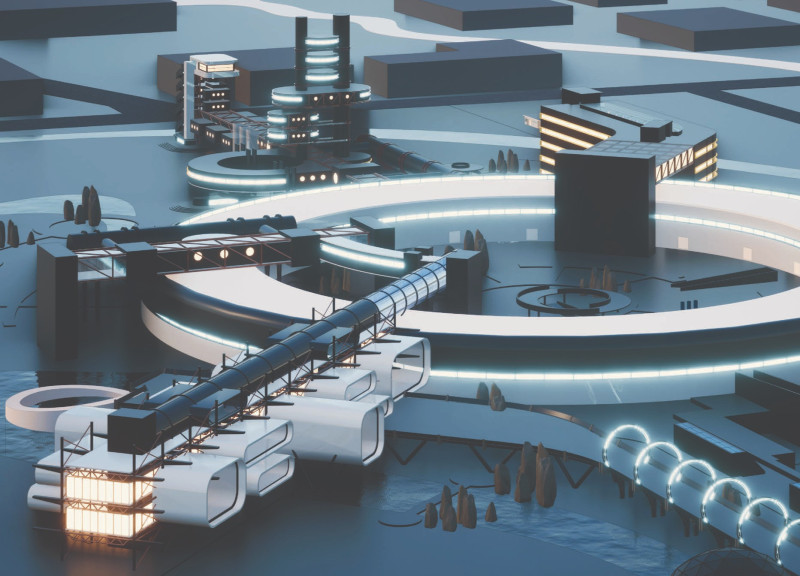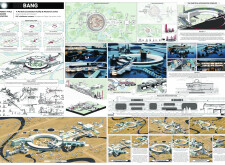5 key facts about this project
### Project Overview
The Big Bang Particle Accelerator Facility and Research Center is situated on the Indian Institute of Science (IISc) campus in Khudapura Village, Karnataka, India. The facility serves dual purposes: advancing scientific research and providing an educational platform for the public through museum exhibits. The design intention is to create an environment that encourages both scholarly activity and community engagement, fostering a comprehensive understanding of particle physics and the universe's origins.
### Spatial Organization
The layout of the facility is strategically zoned to facilitate both research and public interaction. Central to the design is the Accelerator Complex, which houses the main particle acceleration equipment. Adjacent to this, the Museum of the Universe presents educational exhibitions that highlight cosmic phenomena and invite visitor participation through interactive displays. Innovation Pods are also integrated into the design, offering flexible spaces for various scientific experiments and collaborations across different disciplines, thereby promoting a proactive research environment.
### Material Selection and Sustainability
The material palette has been carefully chosen to enhance the facility's durability and functionality. Reinforced concrete forms the structural elements, ensuring resilience against environmental conditions. Extensive glazing allows for natural light, fostering visual connections between interior spaces. Steel frameworks support heavy machinery, particularly in the accelerator area. Sustainable practices are emphasized through the use of recycled materials and green roofs, contributing to the overall ecological responsibility of the design. These material choices not only serve functional purposes but also reflect a commitment to contemporary sustainable architecture.


















































